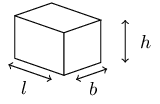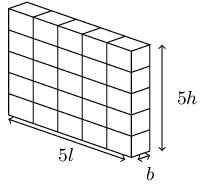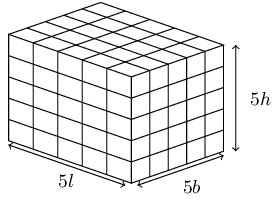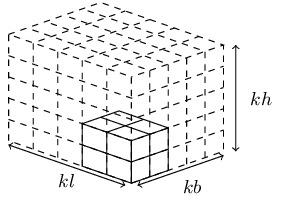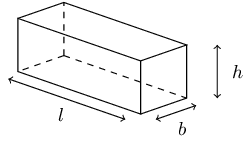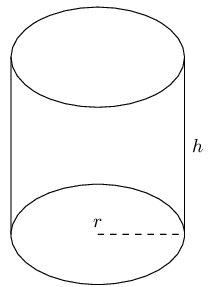If the length of the radius of a circle is a third of its original size, what will the area of the new
circle be?

The area of the original circle is: \(\pi r^{2}\). Now we reduce the radius by a third. In other words we
multiply \(r\) by one third. The new area is:
\begin{align*}
A_{\text{new}} & = \pi \left(\frac{1}{3}r\right)^{2} \\
& = \frac{1}{9} \pi r^{2} \\
& = \frac{1}{9} A
\end{align*}
Therefore, if the radius of a circle is a third of its original size, the area of the new circle will be
\(\frac{1}{9}\) the original area.
If the length of the base's radius and height of a cone is doubled, what will the surface area of the new
cone be?
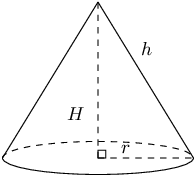
We can find the new area by noting that the area will change by a factor of \(k\) when we change the
dimensions of the cone. In this case we are changing two dimensions of the cone and so the new area will
be: \(A_{\text{new}} = k^{2}A\)
The value of \(k\) comes from the word “doubled” in the question: the value of \(k\) is 2.
So the new area of the cone will be \(A_{\text{new}} = 4 \times A\) if we double the height and the
base's radius of the cone.
Therefore the surface area of the new cone will be 4 times the original surface area.
If the height of a prism is doubled, how much will its volume increase by?
We do not know if we have a rectangular prism or a triangular prism. However we do know that the volume
of a prism is given by:
\[V = \text{area of base} \times \text{height of prism}\]
Now we are changing just one dimension of the prism: the height. Therefore the new volume is given by:
\begin{align*}
V_{\text{new}} & = \text{area of base} \times 2(\text{height of prism}) \\
& = 2V
\end{align*}
Therefore the volume of the prism doubles if the height is doubled.
If the length of each side of a triangular prism is quadrupled, what will the volume of the new
triangular prism be?
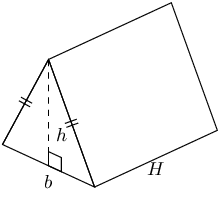
When multiplied by a factor of \(k\) the volume of a shape will increase by \(k^{3}\). We are told that
the dimensions are quadrupled. This means that each dimension is multiplied by 4. Therefore \(k = 4\).
Now we can calculate \(k^{3}\).
\[k^{3} = \left( 4 \right)^3 = 64\]
Therefore, if each side of a triangular prism is quadrupled, the volume of the new triangular prism will
be 64 times the original shape's volume.
Given a prism with a volume of \(\text{493}\) \(\text{cm$^{3}$}\) and a surface area of
\(\text{6 007}\) \(\text{cm$^{2}$}\), find the new surface area and volume for a prism if all
dimensions are increased by a constant factor of \(\text{4}\).
We are increasing all the dimensions by 4 and so the volume will increase by \(4^{3}\). The surface area
will increase by \(4^{2}\).
\begin{align*}
V &= 493 \times 4^{3} \\
& = \text{31 552}\text{ cm$^{3}$} \\
\text{Surface area} &= \text{6 007} \times 4^{2} \\
&= \text{96 112}\text{ cm$^{2}$}
\end{align*}
Therefore the volume is \(\text{31 552}\) \(\text{cm$^{3}$}\) and the surface area is
\(\text{96 112}\) \(\text{cm$^{2}$}\).


